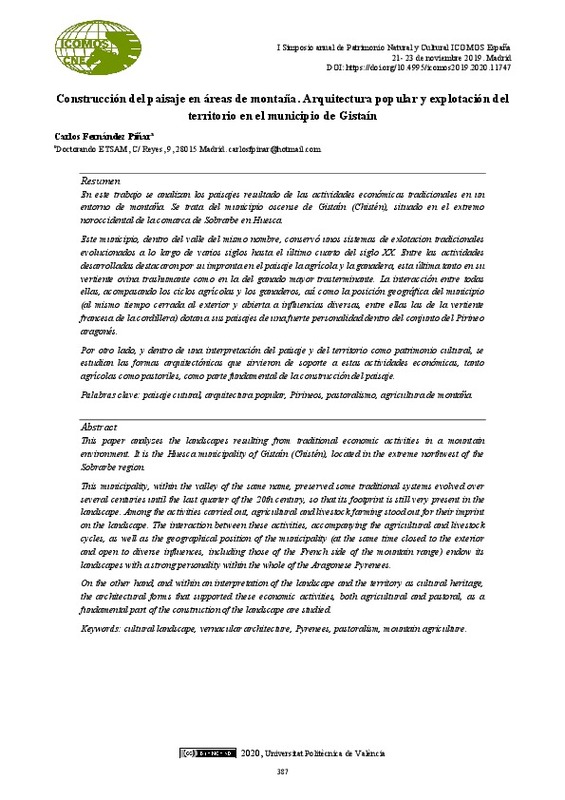JavaScript is disabled for your browser. Some features of this site may not work without it.
Buscar en RiuNet
Listar
Mi cuenta
Estadísticas
Ayuda RiuNet
Admin. UPV
Construcción del paisaje en áreas de montaña. Arquitectura popular y explotación del territorio en el municipio de Gistaín
Mostrar el registro completo del ítem
Fernández Piñar, C. (2021). Construcción del paisaje en áreas de montaña. Arquitectura popular y explotación del territorio en el municipio de Gistaín. En I Simposio anual de Patrimonio Natural y Cultural ICOMOS España. Editorial Universitat Politècnica de València. 387-395. https://doi.org/10.4995/icomos2019.2020.11747
Por favor, use este identificador para citar o enlazar este ítem: http://hdl.handle.net/10251/160335
Ficheros en el ítem
Metadatos del ítem
| Título: | Construcción del paisaje en áreas de montaña. Arquitectura popular y explotación del territorio en el municipio de Gistaín | |
| Autor: | Fernández Piñar, Carlos | |
| Fecha difusión: |
|
|
| Resumen: |
[EN] This paper analyzes the landscapes resulting from traditional economic activities in a mountain
environment. It is the Huesca municipality of Gistaín (Chistén), located in the extreme northwest of the
Sobrarbe ...[+]
[ES] En este trabajo se analizan los paisajes resultado de las actividades económicas tradicionales en un entorno de montaña. Se trata del municipio oscense de Gistaín (Chistén), situado en el extremo noroccidental de la ...[+]
|
|
| Palabras clave: |
|
|
| Derechos de uso: | Reserva de todos los derechos | |
| ISBN: |
|
|
| Fuente: |
|
|
| DOI: |
|
|
| Editorial: |
|
|
| Versión del editor: | http://ocs.editorial.upv.es/index.php/icomos_es/icomos2019/paper/view/11747 | |
| Título del congreso: |
|
|
| Lugar del congreso: |
|
|
| Fecha congreso: |
|
|
| Tipo: |
|








